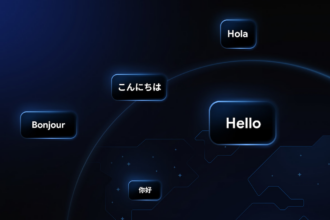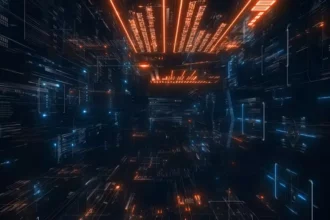Table of Contents
ToggleHow A.I. Is Changing How Chefs Cook
Artificial Intelligence (AI) is transforming culinary practices by expanding creativity, inspiring innovative recipes, and influencing restaurant design. Chefs increasingly rely on AI to explore new ideas while navigating the balance between human artistry and technology.
AI Redefining Creativity in Culinary Arts
AI shifts culinary creativity beyond traditional methods. It offers new approaches for chefs to experiment with flavors, techniques, and presentation styles. This shift introduces a broader creative landscape that was previously unexplored.
AI-Assisted Recipe Innovation
Experimentation with AI-Generated Menus
Chefs such as Grant Achatz of Next in Chicago integrate AI-generated suggestions into the menu. Achatz experiments with a nine-course meal inspired by recipes that AI helps develop, reflecting a blend of human and machine creativity.
AI as an Uncharted Tool for Recipe Innovation
Despite AI’s established use in restaurant operations, its role in recipe innovation remains experimental. Many chefs are still assessing the full potential and limitations of AI in creative culinary development.
Divergent Views Among Chefs on AI Use
- Resistance Based on Human Artistic Integrity: Some chefs, like Dominique Crenn, reject AI involvement, valuing the cooking process as a purely human art form.
- Embracing AI as Technical Assistance: Others, including Ned Baldwin, welcome AI tools for technical support without compromising their creative control.
AI Tools Creating Novel Culinary and Design Ideas
AI platforms such as ChatGPT and Midjourney generate innovative concepts for dishes, restaurant aesthetics, and ambiance. This broadens AI’s influence from menu creation to the overall dining experience.
Physical Limitations of AI in Cooking
AI cannot physically prepare food or build restaurant environments. It encourages chefs to think beyond conventional boundaries but cannot replace hands-on skills.
Key Takeaways
- AI expands culinary creativity and supports novel recipe ideas.
- Chefs hold mixed opinions on AI’s role in cooking arts.
- AI impacts both menu innovation and restaurant design.
- Physical cooking remains a human domain despite AI’s conceptual support.
How A.I. Is Changing How Chefs Cook
AI is transforming how chefs approach cooking, blending human creativity with machine-generated ideas to reshape culinary arts. Curious how this high-tech twist affects your favorite dishes? Let’s dive into the kitchen where silicon meets saucepan.
First off, AI is shaking up creativity in the culinary world. Traditionally, chefs relied on experience, intuition, and trial and error. Now, AI acts as a creative partner, mashing up flavors and techniques in ways humans might never imagine. It’s not just gadgets swirling in pots; it’s rethinking what creativity means in the kitchen.
Think of creativity not as a lone chef’s muse anymore but as a dialogue between human skill and AI insight. This redefinition opens doorways to recipes that surprise and challenge conventions.
Take Grant Achatz, the visionary chef behind Chicago’s Next. Instead of relying solely on personal inspiration, he experiments with AI-generated menus. Imagine a nine-course feast born from AI suggestions that channel imaginary chefs’ styles—culinary fiction meeting reality on your plate. It’s part human, part machine, resulting in revolutionary dining experiences.
However, recipe innovation with AI remains largely uncharted territory. Sure, restaurants widely use AI for operations, like optimizing orders and managing inventory. But using AI to craft recipes? That’s still an adventurous frontier. Chefs are experimenting, pushing boundaries, but the full potential hasn’t quite landed in mainstream kitchens.
Not everyone is on board with this AI-driven culinary revolution. Certain chefs, like Dominique Crenn, hold firm that cooking is a deeply human art. For them, the kitchen is sacred ground where intuition, emotion, and hard-earned skill create magic. AI’s intrusion feels like a threat to this tradition, a cold algorithm trying to replace soulful craft.
On the flip side, some chefs welcome AI as a useful tool. Ned Baldwin, for example, embraces AI’s technical assistance. He sees it as enhancing efficiency and inspiration rather than replacing human creativity. It’s more like AI is a sous-chef who crunches data and tosses out clever suggestions—still leaving the final touches to the human chef.
AI’s influence stretches beyond just recipes. Tools like ChatGPT and Midjourney generate wild ideas for dishes and even shape restaurant ambiance and visual designs. They inspire chefs and designers to think beyond recipes—how the dining space looks, feels, and tells a story. The result? Entire dining experiences infused with fresh, tech-inspired energy.
Despite all this innovation, AI bumps into obvious limits: it can’t stir pots or flip pans (yet). Cooking’s physical aspect – the hands-on chopping, mixing, tasting – remains uniquely human. But that’s not a weakness. Instead, AI challenges chefs to step outside their comfort zones, try unusual combos, and imagine new food landscapes.
So, what do all these changes mean for you, the diner? Expect menus evolving faster, offers that blend tradition and innovation, and more personalized dining adventures. Thanks to AI, chefs can experiment boldly without wasting resources, bringing you novel flavors and even immersive restaurant atmospheres fueled by data-driven creativity.
Here are some actionable tips for food lovers curious about AI’s culinary impact:
- Explore AI-Influenced Menus: Look out for restaurants like Next showcasing AI-inspired dishes. They offer a glimpse into future dining trends.
- Ask Questions: When dining, ask chefs or servers about the creative process. Are they using AI tools? What part did technology play?
- Stay Open-Minded: Some AI-inspired dishes might seem strange at first. Embrace curiosity; sometimes the weirdest combos taste the best.
- If You’re a Chef: Experiment with AI platforms like ChatGPT or Midjourney to generate fresh recipe ideas or design concepts.
In a nutshell, AI doesn’t replace chefs; it expands their toolkit. It sparks new ideas, breaks barriers, and invites culinary artists to rethink what’s possible. As technology keeps evolving, kitchens may no longer be just places where food is cooked—they might become laboratories of infinite imagination powered by both human heart and AI brains.
“AI doesn’t take your job; it makes your job more interesting,” says a tech-savvy chef friend. After all, the best recipes marry science and soul, logic and love. In the end, it’s still the human who tastes, adjusts, and serves with passion.
What do you think—should AI whip up your next gourmet meal, or is cooking a sacred craft best left to human hands? The debate is sizzling hotter than any stove right now.
What role does AI play in recipe innovation for chefs?
AI helps chefs experiment with new menu ideas by generating unique recipe suggestions. These suggestions combine traditional cooking with AI creativity, opening up novel culinary paths.
Why do some chefs resist using AI in their cooking process?
Some chefs see cooking as a deeply human art. They believe AI intrudes on personal creativity, which should remain purely human-driven without digital interference.
How are AI tools like ChatGPT influencing restaurant design?
Beyond recipes, AI tools help create ideas for dish presentation and restaurant ambiance. They inspire chefs and designers to explore new visual and atmospheric concepts.
Can AI physically cook or prepare food in the kitchen?
No, AI cannot perform physical cooking tasks. It serves as a creative aid, encouraging chefs to think differently and innovate rather than physically prepare meals.
Is AI widely accepted in the culinary industry for developing recipes?
AI use in recipe development is still new and experimental. While some chefs embrace it, many consider it uncharted territory, blending traditional methods with emerging technology.





